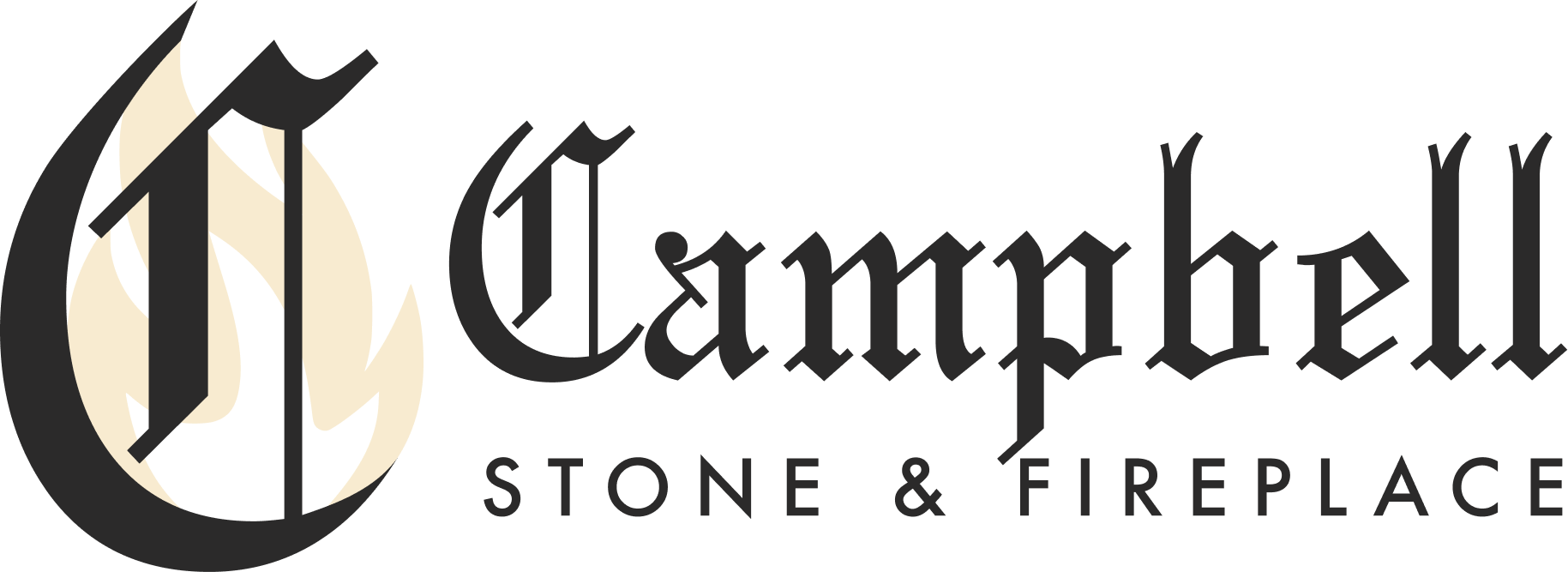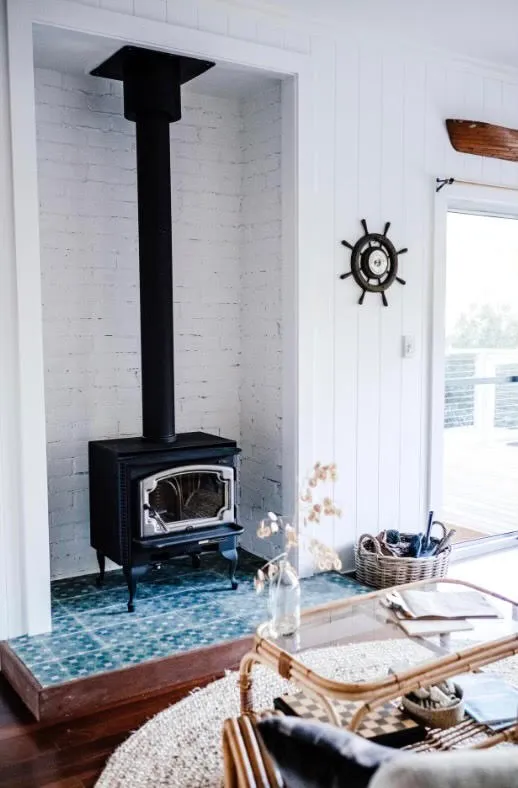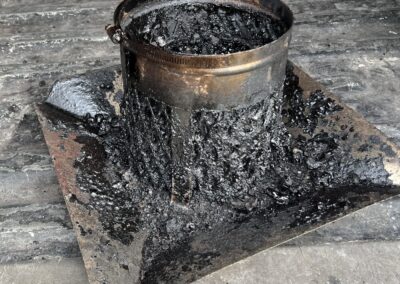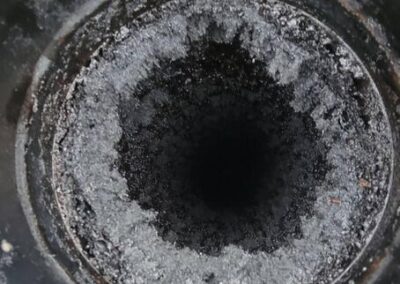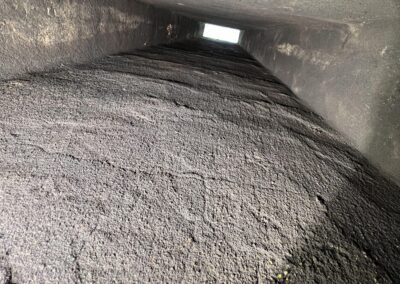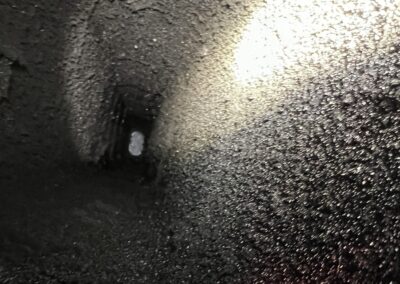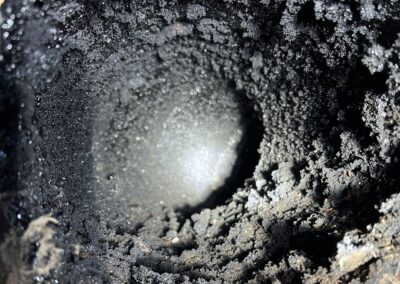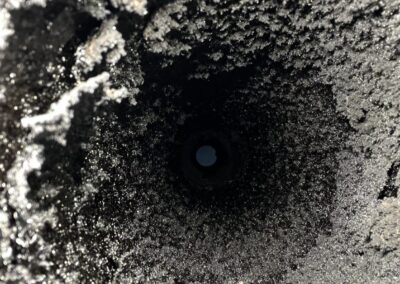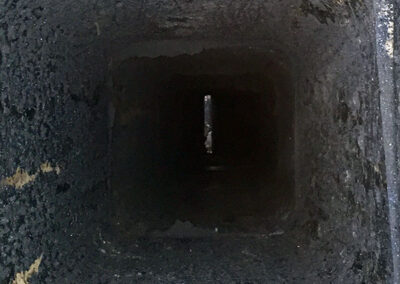Chimney & Wood Stove Sweeps
Chimney sweeping is a crucial maintenance task for maintaining the safety, efficiency, and longevity of a chimney and fireplace or stove system. Here’s why chimney sweeping is important and the potential outcomes if a chimney is not cleaned regularly.
- The primary purpose of chimney sweeping is to remove accumulated soot, creosote, and debris from the interior walls of the chimney flue. Creosote, a highly flammable substance produced by the incomplete combustion of wood, can accumulate over time and pose a significant fire hazard. Regular chimney sweeping helps to reduce the risk of chimney fires caused by creosote ignition.
Improvement of Airflow and Draft:
- A clean chimney promotes better airflow and draft, allowing smoke, gas, and combustion byproducts to exit the home efficiently. Accumulated debris and obstructions in the chimney flue can restrict airflow, leading to poor combustion, backdrafts, and smoke entering the living space.
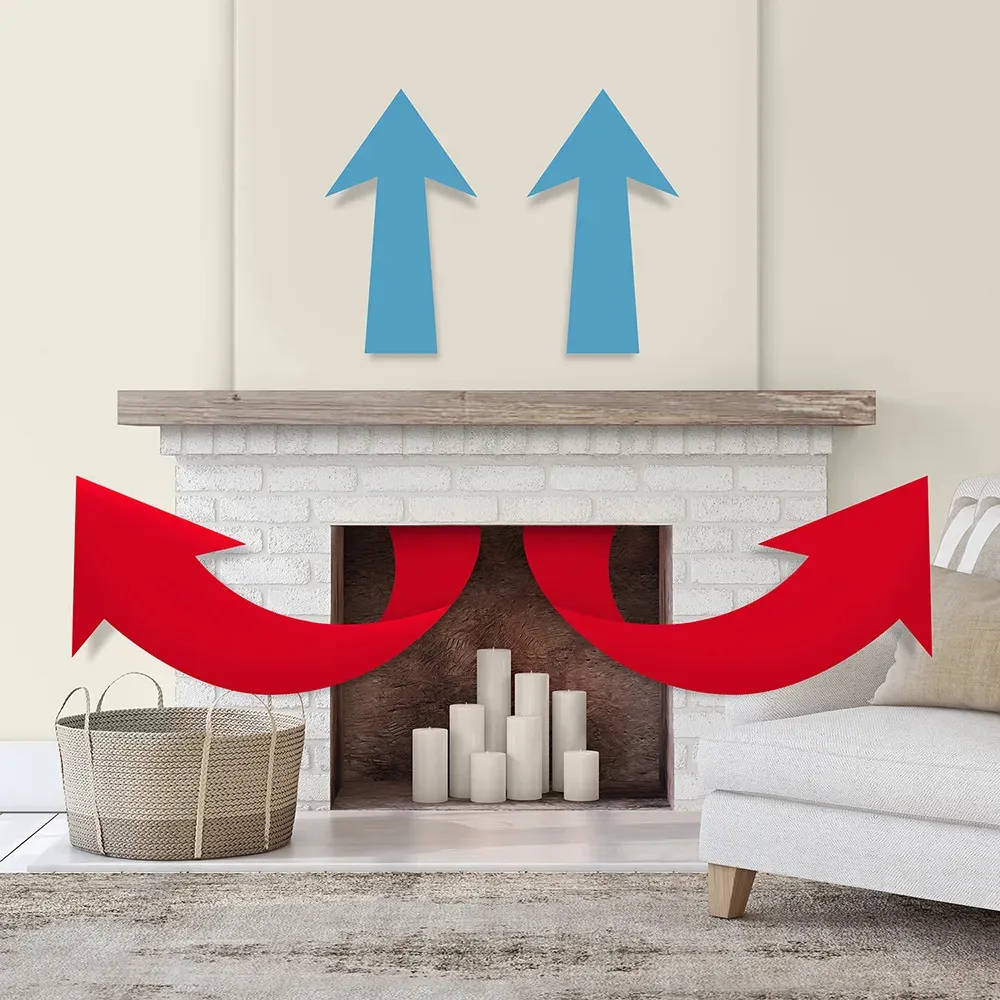
Creosote Explained
Creosote is a natural byproduct of combustion that forms when wood or other organic materials are burned in a fireplace, stove, or chimney. It is composed of various chemicals, including tar, soot, and carbon, and can accumulate on the interior walls of the chimney flue over time. Creosote buildup is a common issue in chimneys, and it poses several dangers, especially when it reaches certain levels of accumulation.
First Degree Creosote:
First-degree creosote is the lightest form of creosote buildup and typically appears as a fine, powdery substance on the interior walls of the chimney flue. It is relatively easy to remove and may be swept away with a chimney brush during regular maintenance.
- Dangers: While first-degree creosote buildup is not as hazardous as more severe forms, it can still pose a fire risk if left unchecked. If ignited, it can contribute to chimney fires, especially when combined with other flammable materials.
Second Degree Creosote:
Second-degree creosote is characterized by a thicker, flaky or crusty buildup on the chimney walls. It may contain a higher concentration of tar and other combustible materials compared to first-degree creosote.
- Dangers: Second-degree creosote poses a higher risk of chimney fires than first-degree creosote. It is more difficult to remove and may require professional chimney sweeping services to effectively eliminate the buildup.
Third Degree Creosote:
Third-degree creosote is the most severe form of creosote buildup and is often referred to as glazed creosote. It appears as a hard, shiny, tar-like substance that adheres tightly to the interior walls of the chimney flue.
- Dangers: Third-degree creosote is extremely combustible and poses a significant fire hazard. It can ignite at relatively low temperatures and burn intensely, leading to chimney fires that can cause extensive damage to the chimney and surrounding structure.
